Exhibition for women
Existing translations
In the new art space "Fabrika", the exhibition "Woman is a friend of man" was opened, dedicated to 8 March. The exhibition is dedicated to examining the image of women in the works of contemporary artists of different generations and different genres and styles from the 1980s to the present day.
The name playfully parodies the humour of Soviet film comedies and pokes fun at bureaucrats. But in terms of content, the exhibition proved subterranean in today's world of bourgeois St Petersburg culture.
Hardly any other gallery today exhibits paintings by artists such as academics or realist painters who glorify the beauty of the human soul and body. Virtually no galleries in St. Petersburg exhibit the poster art of late socialism or pointedly social poster art, apparently fearing that excessive meditation on the nature of socio-economic formations - socialism and capitalism - will not be well received.
The Fabrika exhibition space has managed to create a fresh mix that highlights the appearance of tradition and the search for meaning.
Today, the women's issue is being updated all over the world. The capitalist world, in one way or another, is wiping aside all the achievements of socialism, women's liberation from social inequality with men, women's employment, benefits and support for mothers. It perverts the women's issue by replacing the real liberation of women in a world of possessive thinking from the exploitation of the female body, health, beauty and motherhood with invented stories and imposed, life-destroying and ecological consumption.
The women's exhibition presents women in their authentic essence, liberated from consumerism. The young artists Julia Bobrova and Sergey Nekrasov presented their large canvases with life-size images of contemporaries, touching, somewhat cold, self-sufficient girls with a subtle inner world. The artists are concerned to praise the female body, the breath of the skin, the transmission of the tan, the flesh and skin of the girls with deep attention to their individuality. This mastery was virtuously mastered by the outstanding artist Ilya Repin, whose name was carried in the name of the Academy of Arts of the USSR. This year, unfortunately, the authorities insidiously deprived the Academy of this worthy name. In fact, the Academy created a respectable gallery of highly artistic portraits of its generation. The artists also touched on the gender issues of the modern world of alienation and atomised existence. Flamboyant girls, obsessed with fashionable clothes, comfort and wealth, unfortunately suffer from an inability to find a common language with the opposite sex; a man does not seem like a living person, but like a petrified, crumbling ghost statue … In many portraits, a latent longing for loneliness can be seen behind the outward signs of "success".
Some of the works in the exhibition are executed in a non-traditional format - on round and oval surfaces, which gives them a salon touch and reinforces the possibility of being bought for contemporary interiors.
The artist … presents a series in which large-scale faces of girls are paired with flowers that are also enlarged. The image of the woman-flower is presented straightforwardly and with full force. The invitingly open bosom of the flowers reflects the restrained attractiveness of the models' eyes.
The exhibition features works by the hip and successful artist Anna Krasnaya. This is the series "Women in the Bathroom", produced on oval medium. The female contemporaries with naked, slender bodies that meet the modern criteria of bourgeois beauty revel in the caress of comfort. But as a rule they are depicted facing away from the viewer, we cannot see their eyes. The models seem to want to protect themselves from unnecessary intrusiveness, they try to hide their souls and show their bodies, there is a hidden element of loneliness and tragedy in the works.
Portraits of elderly women, grandmothers, are images of women whose lives conceal traditional harmony despite the hardships and historical disasters they have endured.
The portraits of pregnant young women are done with good-natured humour and even mockery (a girl in a striped dress caresses her precious belly, which resembles a watermelon). But these portraits conceal a strong humanistic meaning.
A completely different aura radiates from a stand with Soviet posters and posters showing women from the late socialist era. They have their own specifics, the women of the 80s differ from the women of the 60s and 50s. There is no obvious simplicity and emotionality in them, they are rather reserved, stylish, strict and professional. It is not without reason that some of the posters are dedicated to outstanding singers and dancers. There is no hidden sadness and coldness, aloofness, self-isolation in the women's faces, which is peculiar to our contemporaries.
Irina Dudina's social poster mats, for which almost all exhibition venues in St. Petersburg and Moscow are closed, caused a furore, especially among the young artists who exhibited. The images of women in her works are first and foremost the images of the motherland. The Motherland, which proclaims the slogan "The soil belongs to the people!" at the meeting, wonders about the new division of the people: into drunken rags on the ground, into bourgeois advertising consumers who have lost their minds, into those who devote all their energy to serving the Golden Calf... The motherland in the sundress stumbles and falls to her knees, from which she cannot get up, for her eyes are fascinated by the Golden Dollar ...
Elena Babich told of the tradition of celebrating 8 March at the opening ceremony. The evening was concluded with a concert by musicians and singers, young graduates of the Conservatoire. Young highly professional talents are also underground today. The politics of the market, which promotes the nouveau riche and hucksters, does not want to support classical music, which requires a certain threshold of education and taste development. But you should have seen the joy with which the audience, hungry for high art, received the artists and musicians!
Irina Dudina was the ideologist of the exhibition and an active participant in its preparation.
(translated with deepL)
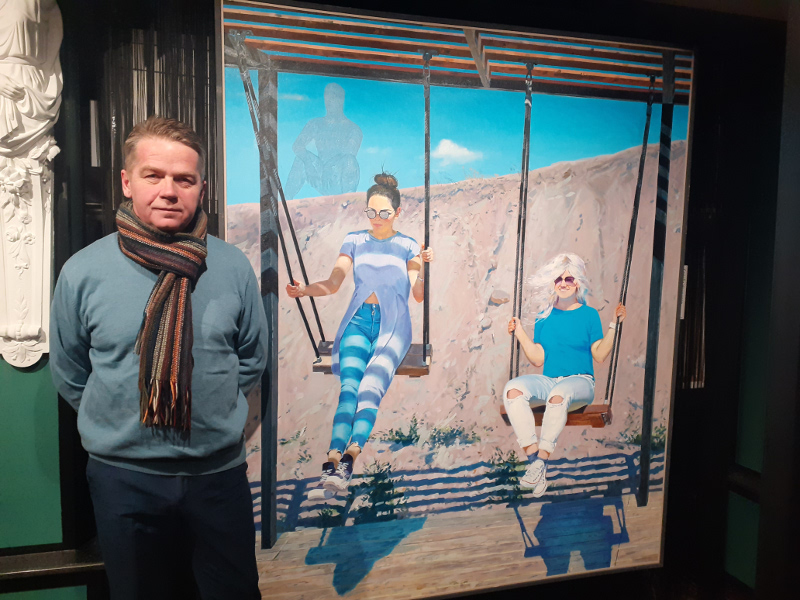
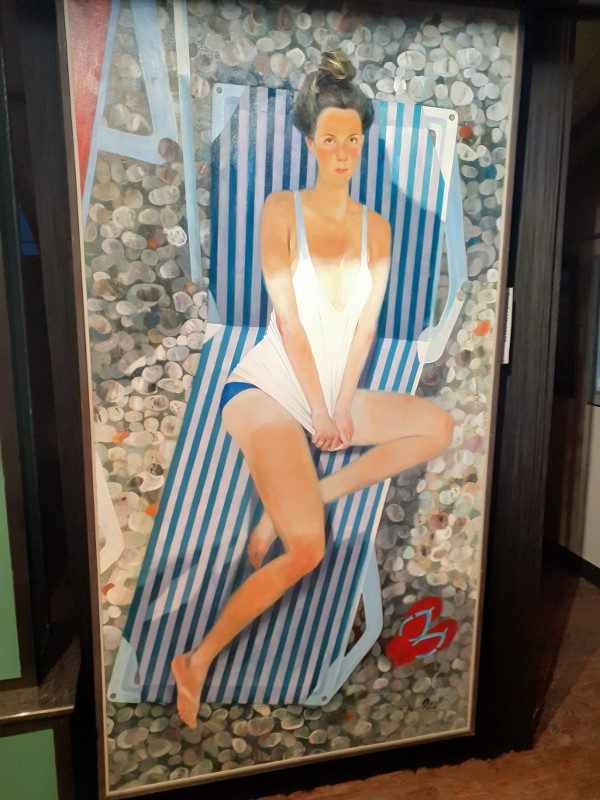
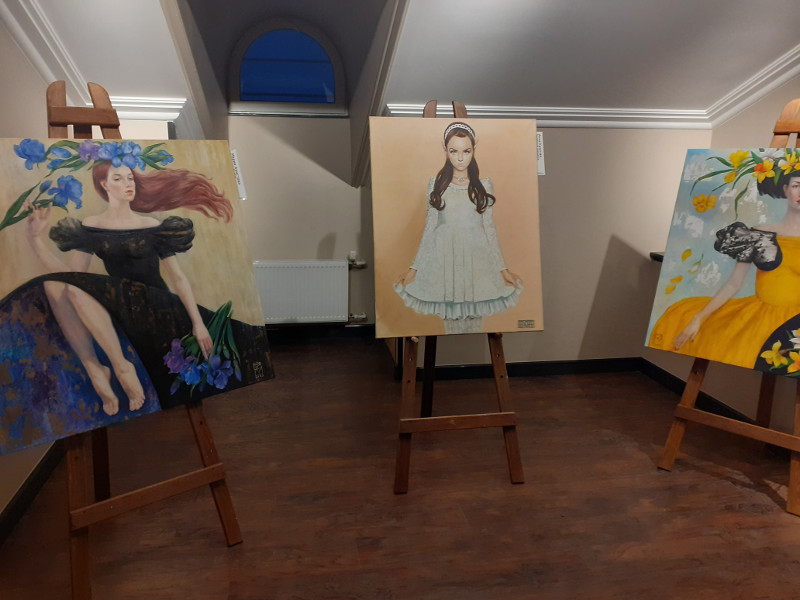
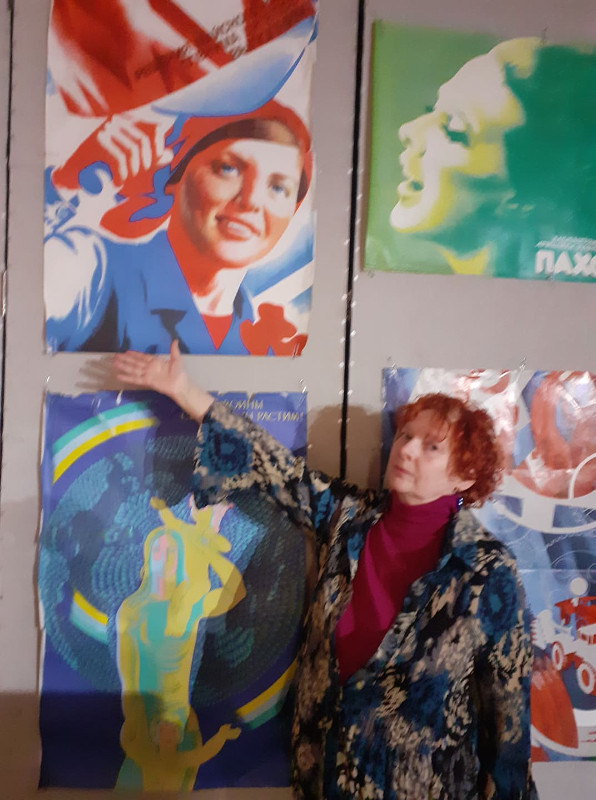
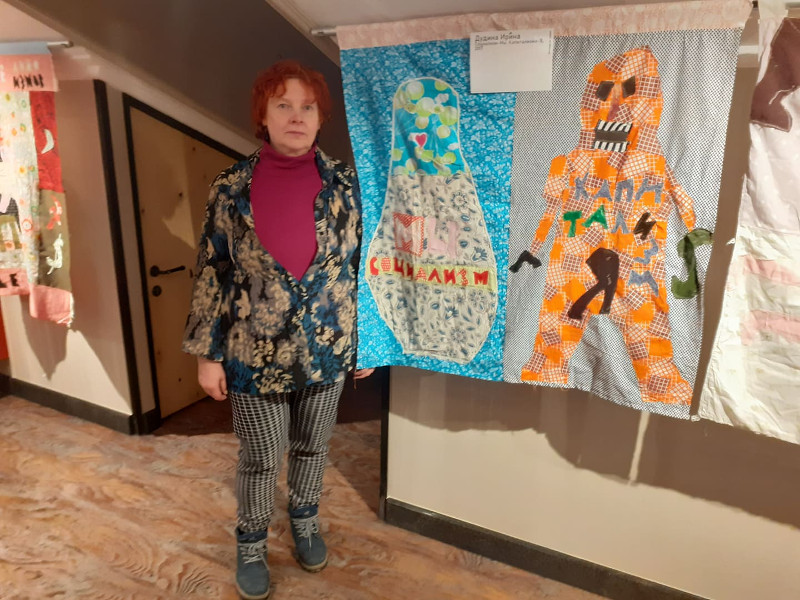
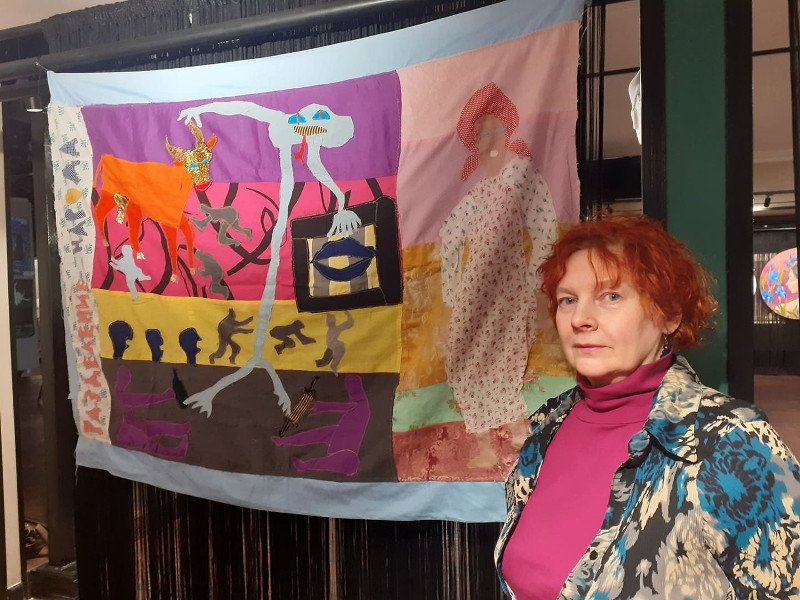
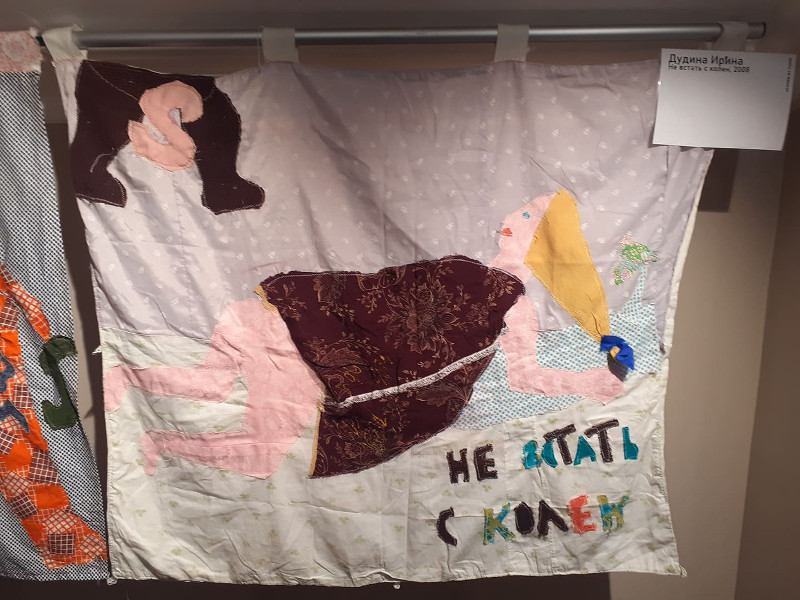
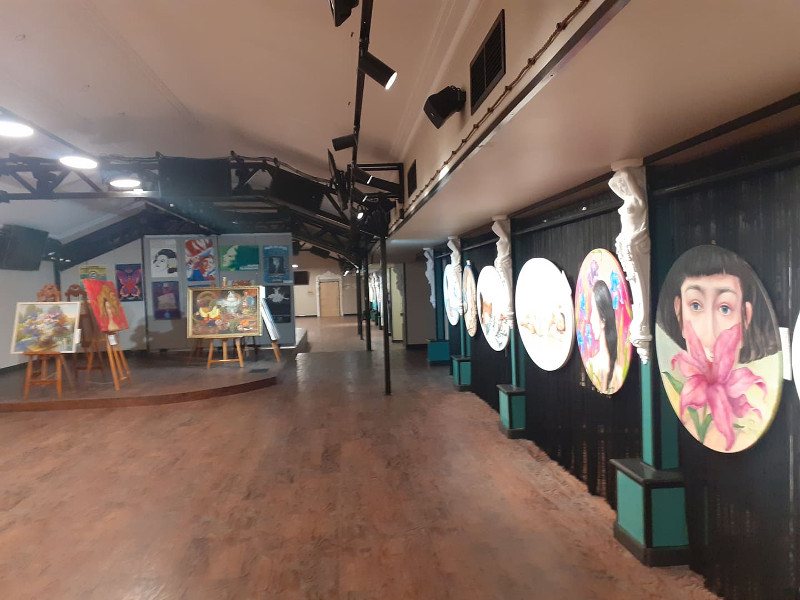
Document Actions




